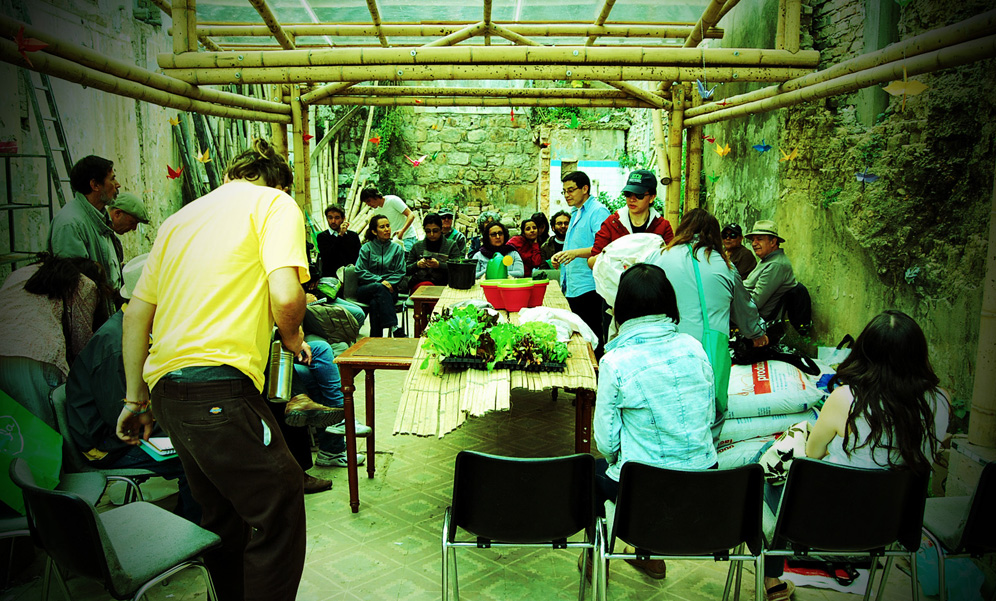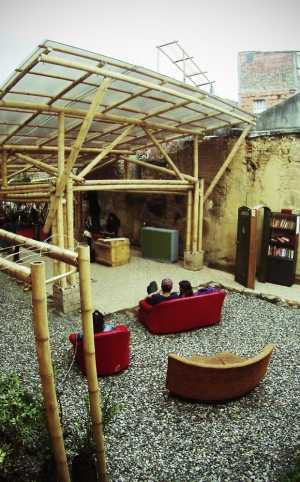If we were in the central-west part of Bogotá, all we would need to do is stand up and look away from the mountains to witness one of the world’s greatest monuments to cement, brick, and steel.
Bogotá is a “monster.” It is a city that grows at such a fast and chaotic pace that it barely allows you to keep up. While there are green spaces, they are not enough. Bogotá is a metropolis.
The Colombian Capital
Colombia‘s capital has 256 million square meters of built-up area—equivalent to more than 2,300,000 buildings. Additionally, Bogotá houses an average of 200 people per hectare.

Some areas, however, have an even higher population density, with at least 568 inhabitants per hectare. This means Bogotá surpasses cities like New York (530 inhabitants per hectare) and Mexico City (490 inhabitants per hectare), as well as other capitals in the region.
With the exception of Simón Bolívar Metropolitan Park, the Country Club of Bogotá, Jardines de Paz Cemetery, Los Lagartos Club, the National University (Universidad Nacional), and parks like El Salitre, El Tunal, Primero de Mayo, Timiza, and Bavaria, as well as San Carlos Hospital, there are very few green spaces visible on the city’s map. Many of these are private clubs, inaccessible to most residents.
An article published by El Tiempo highlights that Bogotá has one of the lowest amounts of green space per resident. While the World Health Organization (WHO) recommends a minimum of 10 square meters per person, Bogotá only has 4.3 square meters per person.
In other words, Bogotá has an abundance of cement, a dense population, and a lack of green areas to provide balance. This affects another reality: there are very few public spaces where people can gather, spend leisure time, and enjoy nature. Accessible, inclusive, and safe public spaces are becoming increasingly scarce.
New Green Spaces
Despite this challenge, what has caught my attention the most is the way people have taken matters into their own hands to counteract these unfavorable conditions.
They have developed creative strategies to transform their surroundings. A few years ago, we noticed a growing trend of urban gardening—people cultivating vegetables, fruits, herbs, and other plants in their homes.
Over time, residents began to recognize the many benefits of home gardening, including food production and organic waste management.

Today, we can say that there is a significant urban gardening movement across Bogotá, particularly in the city center. A great example is La Huerta de la Señora Helena Villamil, located at Calle 28 and Carrera 7.
The neighborhood of Belén, in the district of La Candelaria, is one of the most prominent examples. Many properties now have home gardens, and many more are in the process of creating one.
The Cinema Garden
But there is more. In the ongoing effort to create inclusive spaces—magical places where the residents of downtown Bogotá can express their ideas, share experiences, and connect—some have found a unique way to blend two seemingly unrelated worlds: urban agriculture and film.
This initiative is bringing together the ancestral practice of agriculture and the sophistication of audiovisual art, creating a truly unique experience: a cinema inside an urban garden.

The Cinehuerta (Cinema Garden) is a collaborative effort involving individuals and collectives that have built their urban gardens. Their shared goal is to create more green spaces in Bogotá—spaces that are accessible to the community, built by and for the people, and that serve as educational hubs for children and young people eager to learn.
This is not a fairy tale. The Cinehuerta is being constructed on a small street in Belén by the architectural collective Hábitat Sin Fronteras, cultural organizations like Casa B and Casa Bakatá, urban agriculture advisors (Planta Baja), designers, and, most importantly, the local community, including active participation from neighborhood children. Their goal is simple: to witness what happens when they take control and drive change themselves.
Strengthening the Social Fabric
At Cinehuerta, people come to let their imagination soar. They learn how to make compost, a nutrient-rich soil, plant, and harvest different species. But there is also space to watch films and documentaries. In reality, visitors choose what they want to watch and when.

Workshops and activities are organized both by Cinehuerta itself and by the various collectives involved in the project.
Ultimately, this is yet another space designed to promote community integration and participation. It serves as a reminder that if we work together toward a common goal, change is possible—even when it seems almost impossible. This initiative is another step toward strengthening the existing social fabric and adding more green dots to the city’s urban map.


